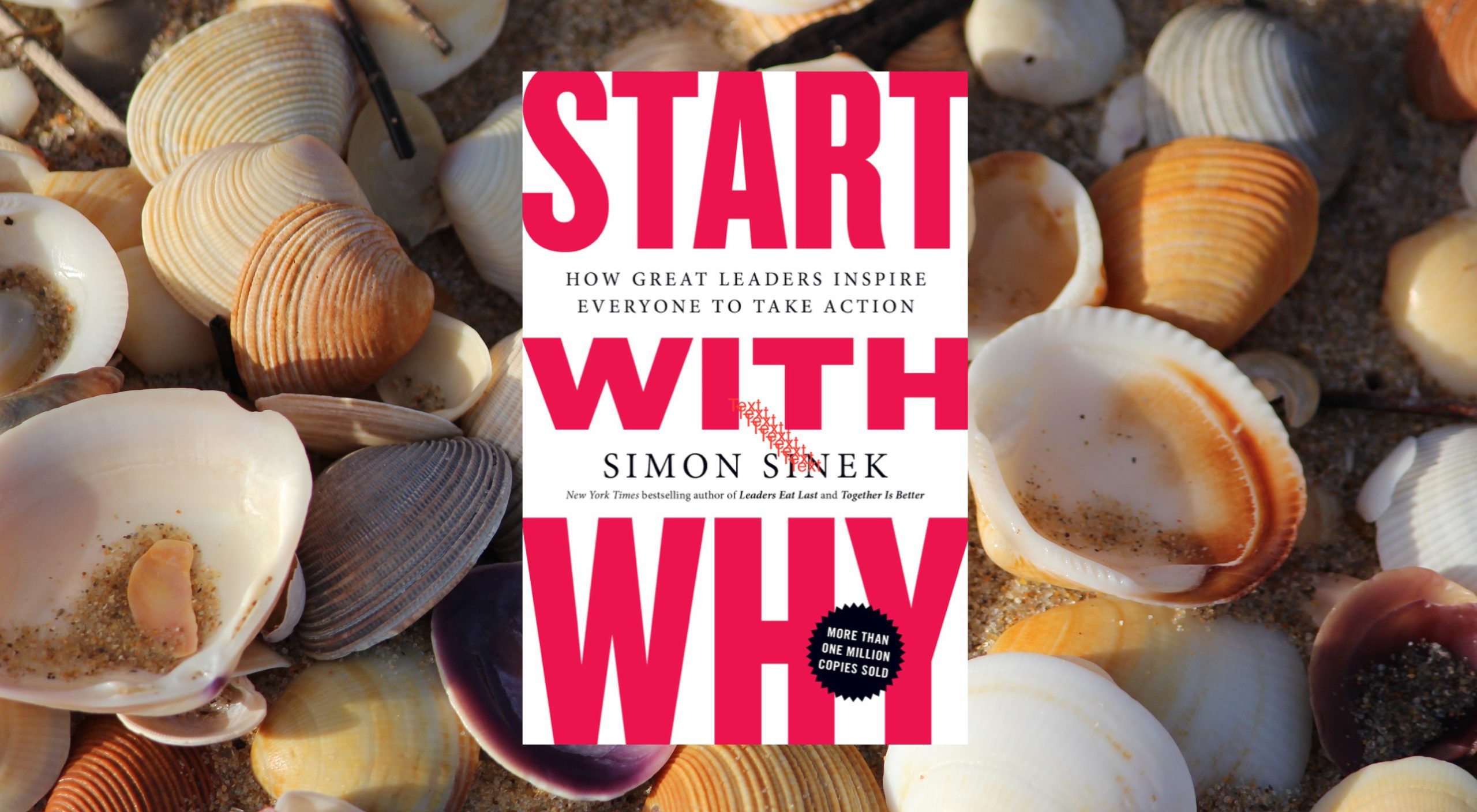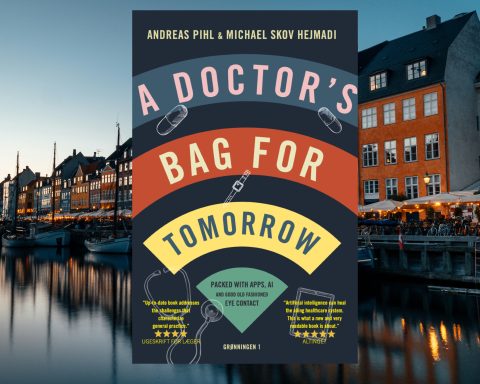 Richard Armitage is a GP and Public Health Specialty Registrar, and Honorary Assistant Professor at the University of Nottingham’s Academic Unit of Population and Lifespan Sciences. He is on twitter: @drricharmitage
Richard Armitage is a GP and Public Health Specialty Registrar, and Honorary Assistant Professor at the University of Nottingham’s Academic Unit of Population and Lifespan Sciences. He is on twitter: @drricharmitage
Simon Sinek is a best-selling author, strategy and leadership consultant, and influential TED speaker. His first book, ‘Start With Why’, was initially published in 2009 by Penguin Random House.1
The central thesis of ‘Start With Why’ is that people will only ‘buy in’ to a particular something if they first realise and understand why that something should be considered as valuable to them. If they don’t first know the why of that something, then knowing the how or the what of it is unlikely to persuade them to adopt it into their lives. Since Sinek primarily operates in the world of business, he condenses his thesis into the following: “In business, it doesn’t matter what you do, it matters why you do it.”
…people will only ‘buy in’ to a particular something if they first realise and understand why that something should be considered as valuable to them.
To make his argument more intuitive, Sinek images and describes, ‘The golden circle,’ a circle consisting of three shells, with the ‘Why’ at the centre, the ‘How’ in the middle, and the ‘What’ on the outside. He claims that, for a person to adopt something, they must begin at the centre of the circle (with ‘Why’), then traverse across it from inside to outside – from why, to how, to what. Should they not start with Why, or traverse the circle from outside to inside, they will be unlikely to adopt that something into their life.
Sinek holds that, if an individual – say a company, a salesman, a politician or, even, a doctor – presents something – be it a product, a service, an idea, or a behaviour – to another individual (a ‘prospect’) with the intention of that prospect taking up that something, two approaches can be adopted.
In the first approach, the company (or salesman, politician, doctor, etc) begins by telling the prospect what the something is, and then how the company produces that something. A business example offered by Sinek, from the world of personal computing, comes from a personal computer company that is not Apple. Here is their sales pitch:
We make great computers. [WHAT]
They’re beautifully designed, simple to use and user-friendly. [HOW]
Wanna buy one?
In this approach, not only is the golden circle traversed in the incorrect direction (from outside to inside), it completely excludes the circle’s key element – the ‘Why’. As a result, this top-down approach fails to cultivate in the prospect an organic inspiration to adopt the product into their life, meaning they will be unlikely to purchase it.
In the second approach, the company instead takes the opposite strategy. It begins by telling the prospect about the why of the company – not the what of the product. Only then does it tell the prospect about the how of the company (again, not the how of the product) before, finally, telling them about the What of the product that is available for purchase. This bottom-up approach stimulates a deep and organic inspiration in the prospect to adopt the product into their lives, such as buy purchasing it. Sinak’s corresponding business example from personal computing this time comes from the Apple:
In everything we do, we believe in challenging the status quo. We believe in thinking differently. [WHY]
The way we challenge the status quo is by making our products beautifully designed, simple to use and user-friendly. [HOW]
And we happen to make great computers. [WHAT]
Wanna buy one?
Sinek argues – by firstly telling people why – that Apple has been able to acquire cult-like followings and enormous market share
It is through this second strategy, Sinek argues – by firstly telling people why – that Apple has been able to acquire cult-like followings and enormous market share in not only the personal computing space, but in mobile, tablet, music player, and smart watch, to become one of the most successful companies in the history of capitalism.
Since it was first published 14 years ago, the book has been well-received by a wide global readership, primarily in the business arena, but also largely across all domains of leadership and management. In addition to selling over 1 million copies, and earning a spot on both the New York Times and Wall Street Journal bestseller lists, Start With Why is also the basis of one of the most popular ever TED talks – delivered by Sinek at TEDxPugetSound in 20092 – which has been viewed over 10 million times to date. I found it to be an engaging and compelling read that successfully transmits a simple, intuitive, yet deeply powerful message.
In fact, “People don’t buy WHAT you want, they buy WHY you do it,” is so impressively commanding that it has an immediate, clear, and likely influential use-case for general practice – specifically in the domain of health promotion.
If a GP wants to start a patient of a new medication for a non-communicable disease – an antihypertensive, say – the ‘sales pitch,’ while containing some more details, largely looks like the following:
“We prescribe medications to patients, and they’re safe and effective. [WHAT]
These medications make people healthier. [HOW]
Wanna try one?”
Like the first, non-Apple, personal computer approach, this pitch traverses the golden circle in the incorrect direction (from outside to inside), and completely excludes the circle’s key element – the ‘Why’. As such, the patient is unlikely to cultivate an organic inspiration to begin taking the medication as a result of this top-down approach, and so it is doubtful that they will comply with, or even agree to, the recommended medication.
After starting with why, the GP can personalise the subsequent how to the specific patient in front of him by giving particular examples of flourishing in life of that patient
What if, instead, the GP adopted the second approach – the Apple approach? This would produce a very different kind of sales pitch:
“In everything I do, I believe in helping people flourish and lead the lives they want to live. [WHY]
I do that by supporting people to become and stay healthy so they can flourish and have the resources to lead the lives they want to live. [HOW]
I can also prescribe safe and effective medications to help with this. [WHAT]
Wanna try one?
Like the second approach from personal computing – that of Apple – this opposite approach starts with ‘Why’ at the centre of the golden circle, and traverses it in the correct direction, from inside to outside. After starting with why, the GP can personalise the subsequent how to the specific patient in front of him by giving particular examples of flourishing in life of that patient – for example, “So you can keep up with your kids when playing football on the park,” “so you can carry on working in the garden so it stays the envy of the neighbours,” or “so you can be there with your grandchildren as they graduate from university.” This bottom-up approach, particularly if it contains personalised examples of the flourishing it could generate, is much more likely to induce a deep organic inspiration in the patient to begin taking, and to closely comply with, the recommended medication.
The central message in Start With Why is not only applicable to leaders in business, but to any roles in which leadership is a key component. Since a role of general practitioners is to help lead their patients into health-promoting behaviours, this certainly incorporates the domain of general practice, and makes this book a valuable read for all GPs.
References/Featured Book
- S Sinek. Start With Why: How Great Leaders Inspire Everyone To Take Action. Penguin Random House, 2009
- S. Sinek. Start with why: how great leaders inspire action. https://www.youtube.com/watch?v=u4ZoJKF_VuA [accessed 29 June 2023]






